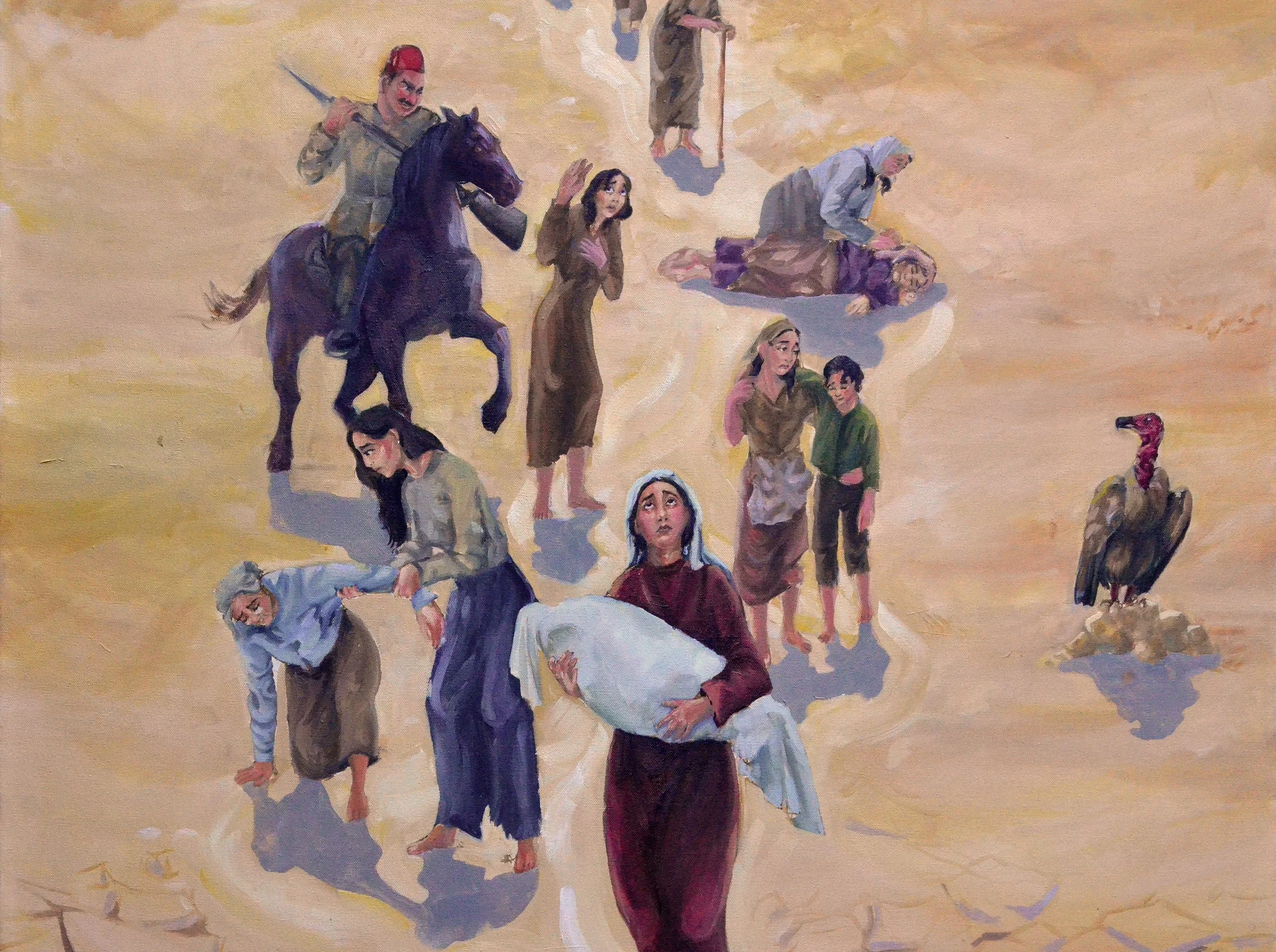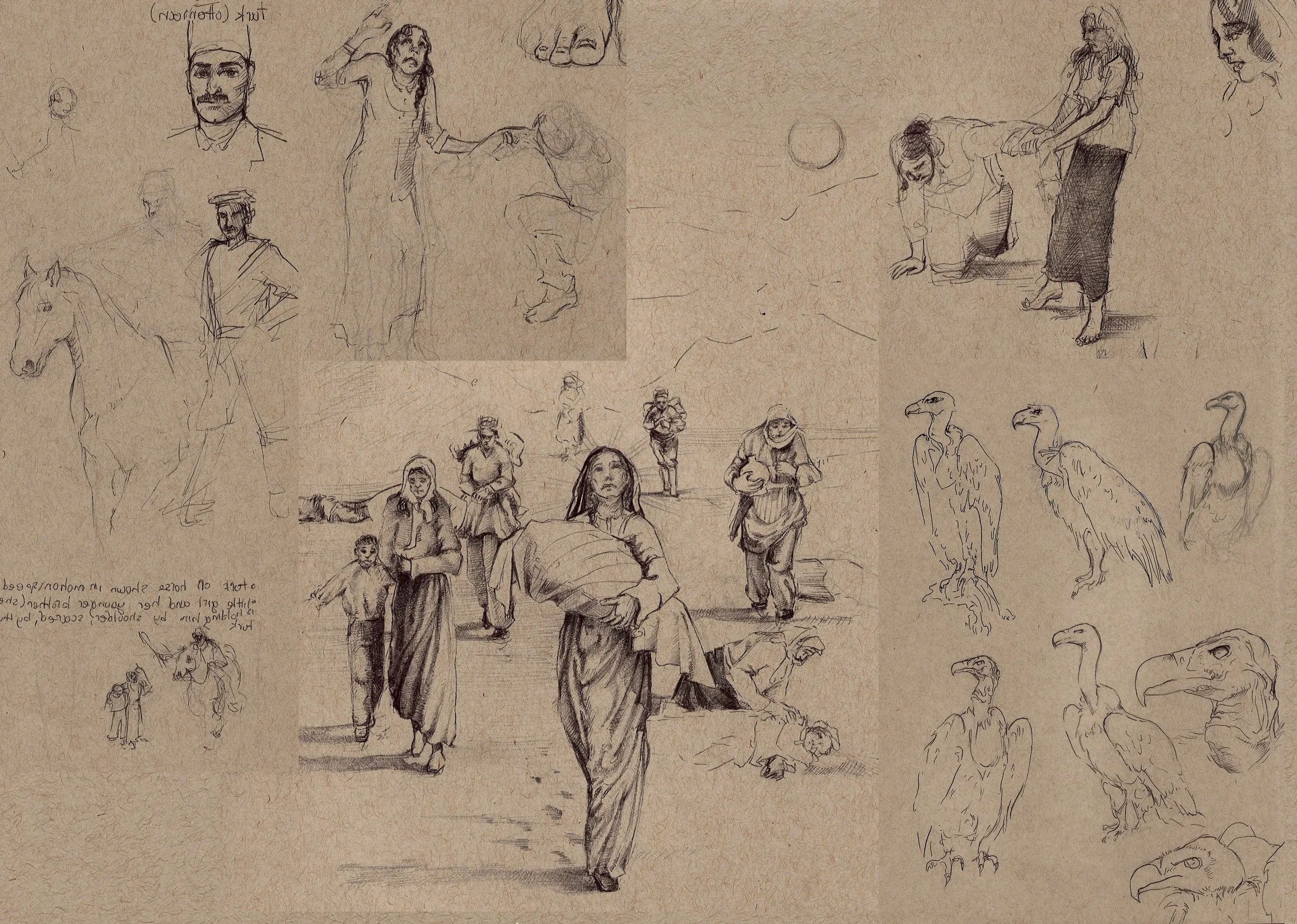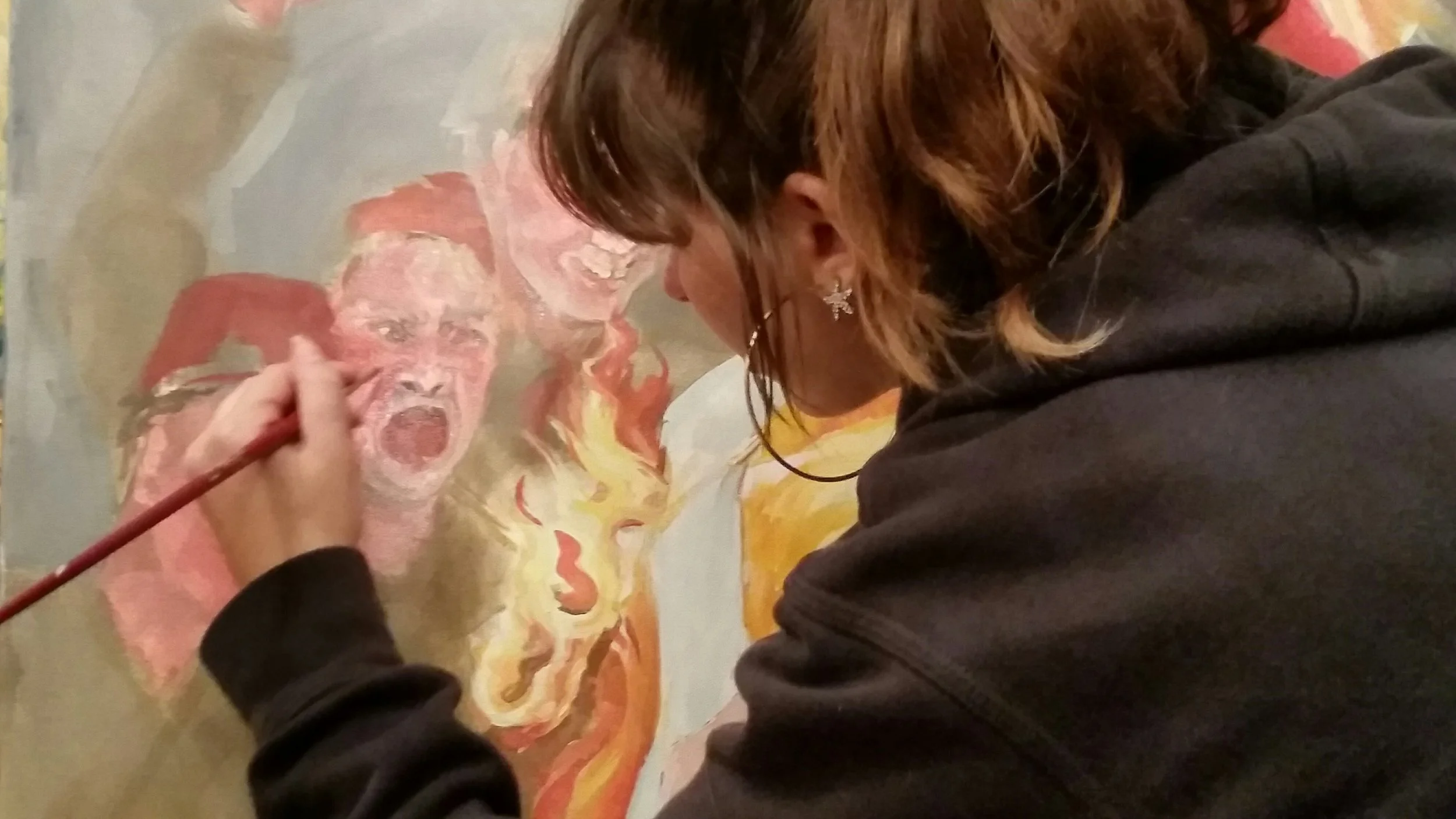
The Armenian Genocide
Artists must speak out about injustice – and I do so with my series on the Armenian genocide from 1915. I became familiar with genocide poetry, photographs, documentaries, and eyewitness accounts, and conducted interviews. This history has always been important for my family: I remember my grandmother telling me how her family barely escaped. Participating in events protesting all forms of genocide made me aware of similar tragedies that are still happening, prompting me to use my art to speak out about genocide.
Death March
Desert March is a painting from my series on the Armenian genocide. It depicts the refugees who were led out to the desert to die. After arresting the Armenian cultural, religious, and intellectual leaders, the Ottoman military collected and executed most Armenian men, and deported the women and children through the desert. In this painting, the road through the mountain shows how far they have traveled. Although some survived, most perished in the desert because they had little food, water, or proper attire for walking in the sun all day. The vulture’s head has a bloody red coloring and reflects the head of the Ottoman soldier on the horse. The vulture is staring with intimidation and hunger at the children. Both the Turk and the vulture are stalking the refugees. The woman carrying the baby portrays the hope of the nation that survived through its unity and resilience.
Komitas
Komitas was an Armenian priest and a great composer who was a witness to the Armenian genocide. The symbolic date of the Armenian genocide is April 24, 1915, when the Armenian elite in Istanbul was imprisoned as a way to destroy the Armenian culture. Along with hundreds of other Armenian intellectuals—Komitas was arrested and deported to a prison camp in April 1915 by the Ottoman government. Because of the horrors he witnessed while in prison, he developed a mentally fragile state and eventually committed suicide.
Through Komitas, I explore the person from the inside and reflect on how their appearance will communicate their psychological struggles.
Burning Angels
Burning Angels depict a prologue to the Armenian genocide: massacres in Adana in 1909 that were documented in the poems of Siamanto. Siamonto himself was executed on April 24, 2015, at the start of the Armenian genocide in which 1.5 million Armenians perished. He wrote the poem “The Dance” and others based on letters written by his friend who as a physician had gone to Adana to assist the victims of the massacres. The poem “The Dance” begins “In a field of cinders where Armenian life was still dying, a German woman, trying not to cry, told me the horror she witnessed….’ Dance,’ they raved, ‘dance till you die, infidel beauties’…With a torch, they set the naked brides on fire.”




